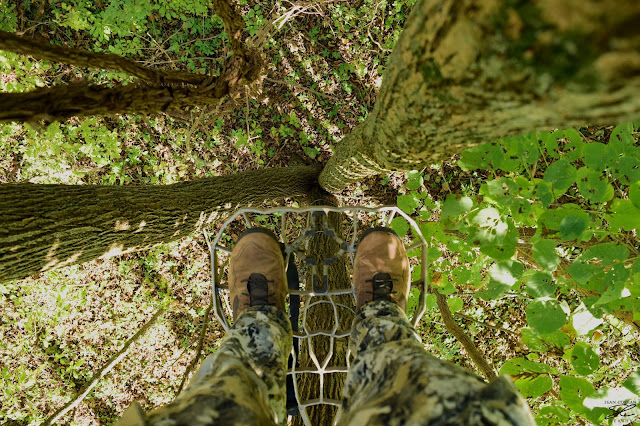Expectations for deer season took an unexpected turn in August when I learned a property I bowhunted for close to a decade was being sold. Discussions with the new land owner seemed promising, until a mid-September phone call revealed their intent to sell off 20 acre parcels of the wooded area. Sure, I could still hunt, but only if I planned to purchase a slice of the pie. With a $200,000 land purchase not being a realistic option I began to scramble, knocking on doors, mailing letters and making phone calls.
A slight sense of relief came when I secured permission on a new property thanks to the help of a friend. On the map the land looked good, but three hunts in early November revealed minimal deer sign and zero deer sightings. Normally I hunt a mixture of private and public land every year so I quickly decided to shift all of my hunting to public land. It was really the only option with what time I have to hunt and November’s all-too-soon arrival.
My annual deer camp trip to southern Ohio came and went without an arrow taking flight. I passed on a doe followed by a six-point buck in hopes of something bigger joining their chase. Nonetheless, it was exciting to watch the persistent young buck pester the uninterested doe. On my last sit of the trip I spotted a good buck that elevated my heart rate, only to watch him walk out of my life, keeping out of bow range the entire time.
Back on public land in central Ohio, I hunted one cold afternoon after a snowfall coated the ground. Scouting new possibilities through the onX app, I selected a few spots to hike to and the concentration of fresh tracks confirmed my thoughts. This would be a decent place to hang and hunt. A few hours watching squirrels followed by a beautiful sunset were all that happened.
The next opportunity to hunt was Saturday November 16. Preparing to hunt, yet not overwhelmingly optimistic I asked my bride whether I should hunt morning or afternoon. She chose the morning (probably because of my growing honey-do list and approaching holiday schedule), so I set my alarm for o’dark thirty then went to sleep.
The alarm came too quickly. I slept great. I was warm and cozy. Thoughts crept into my head, “Sleep some more. It’s the weekend. Public ground is going to get hammered. Everybody and their brother is going to be hunting today.” Those are dangerous thoughts. The ones that help you justify complacency, not only in hunting, but in everything you do in life. They’re like participation trophies. They have no value. My feet hit the floor and I got ready to go.
I hadn’t hunted this spot before, it was only a waypoint on my map. The view looked promising from my phone screen and it was over a half mile from the nearest access. With some snow still coating the ground, I crossed boot tracks in the early stages of my hike. The tracks stopped and split off after about two hundred yards. The further I walked the more deer sign was apparent. Clear skies, a bright moon and patches of snow enabled me to see tracks, scrapes and beds along the route I followed.
Finding a suitable tree on an edge transitioning from thicker to open cover I settled into my stand almost an hour before legal shooting light. Hunting public land has conditioned me to always be extra early. Shortly after sunrise a group of five does wandered across the oak flat to my left, stopping and browsing along their way. Soon thereafter I spotted a fox hunting his way along a distant ridge.
The critters were all out and about it seemed. Especially the squirrels. I was watching a big fox squirrel in front of me for several minutes when something suddenly caught his attention. He scampered up a tree, clung upside down, flicked his tail and barked loudly. Seconds later a buck emerged from the deep drainage and stepped onto the top of the ridge. Slowly surveying the area, he stood statuesque. As he lowered his head to the ground I moved from a seated position to standing, bow in hand, my release on the string.
While the deer started angling toward me I began picking shooting lanes between the trees where I could slip an arrow through. Inside twenty yards he was now broadside approaching an opening as I tried to stop him for a shot. He continued through the window as I attempted to stop him a second and third time. Stopping directly behind the oak tree I used to help hide my tree stand, the deer stood still, completely hidden.
 |
| Where the deer was standing when the arrow impacted. |
Leaves crunched, signifying his continued course along the ridge. Now, with the deer quartering away I whistled in an attempt to stop him this time. Still at full draw, with the deer stubbornly and slowly walking away, my 30 yard sight pin was settled, aiming through his body toward his opposite front leg as the lighted nock launched through the air like a tracer round.
A short dash. A few stumbled steps. A slide down the side of the ridge. It was over. Quick. Clean. It’s always what you want. In that moment I was thankful for many things, in many ways. A few texts were sent. A few pictures taken. The work began. My expectations were exceeded.




































